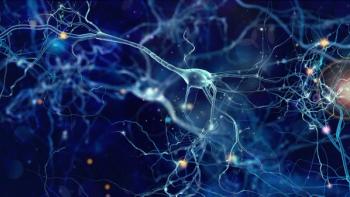
The relationship between endometriosis and infertility
OBGYN.net Conference CoverageFrom 5th International Symposium onGnRH Analogues in Cancer and Human Reproduction inGeneva, Switzerland
Dr. Leonhard Loimer: "The topic we'd like to discuss is your thoughts on the issue of minimal endometriosis and whether it's the cause of infertility in light of the information we have from the Endo-Can Study."
Professor Bruno Lunenfeld: "If we discuss endometriosis in relation to infertility, pain, or to any therapy, unfortunately, the old classification which was ruled out is not sufficient because infertility depends not only on the size of the endometrium foci but also on the localization and the quality of the lesions. I'll give you some examples - infertility - if the localization is precise it may mechanically interfere either through pushing or pulling or changing the two graphical directions between the different organs inside the body, or the lesions may set up blocking situations - then this may cause mechanical infertility. If they are white-like forms, for instance, they may even not respond to any anti-hormonal therapy, and would have to be taken out surgically. If they are red forms and they're active, in the light of this situation, we can treat them very quickly by reducing the hormone status with GnRH analogues. The same thing is true for pain; if these locations sit in areas which are painful - they will create pain but they may not create infertility. So I think that sight, localization, and quality of the lesions is extremely important. We cannot just classify endometriosis according to size, as there it isn't any in the present official endometriosis classification system. Now the other part is mechanical endometriosis - we know that we have at least two main mechanisms of the formation of mechanical problems. The first of which is the immunomodulation mechanism, which I always discuss with my students. I'll tell them once we have learned to control the adhesion, invasion, and the moon-like expulsion - then the creation or genesis at the local site will be resolved as far as the formation of endometriosis. But we have already solved the problem in medicine with ovulation and probably to the implantation. If I were forty-five years younger, I would probably go into this field where I should have gone because my boss at the Weizmann Institute asked me to work with implantation and not with ovulation. I refused, I liked ovulation more and it was easier. Now the second part of endometriosis is about the chemical part - we know very well today that endometriosis foci are chronic inflammations, and in chronic inflammation we have biochemical materials. Biochemical material can very effectively interfere in many of the processes of this complex situation which we call conception. Therefore, any endometriosis from minimum to maximum depending on the quality of the endometrial site, the size of the area, and the location - can produce difficulties in the silent outcome of conception."
Newsletter
Get the latest clinical updates, case studies, and expert commentary in obstetric and gynecologic care. Sign up now to stay informed.















